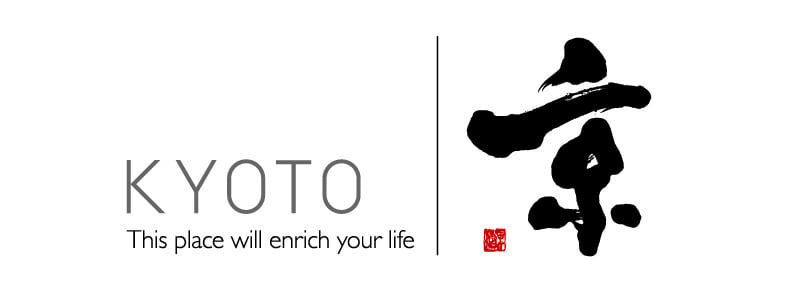- Japanese Culture
- Outdoor
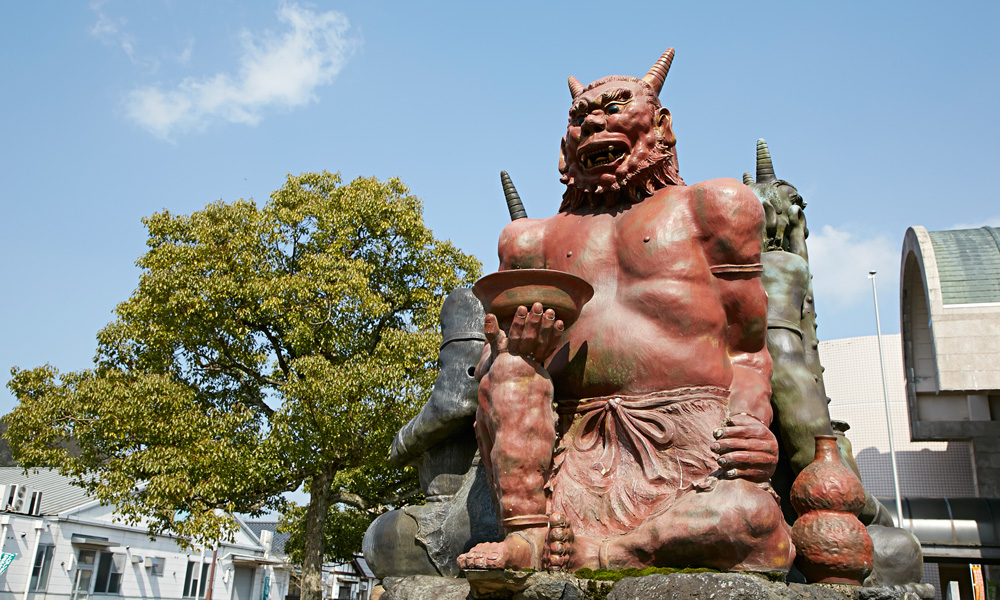
Explore the captivating lore of Kyoto, where the legends of oni (ogres) thrive, especially at Oeyama, a striking 832-meter peak. Believed to be the home of Shōtendōji, the strongest oni, this mountain connects Fukuchiyama, Yosano, and Miyazu. Join a unique journey through this enchanting region, visiting the charming towns of Yosano, Miyazu, Ine, and Kyotango, and uncovering both popular tourist attractions and fascinating oni-themed sites. Don’t miss this magical adventure!
Day 1
1Fukuchiyama Castle
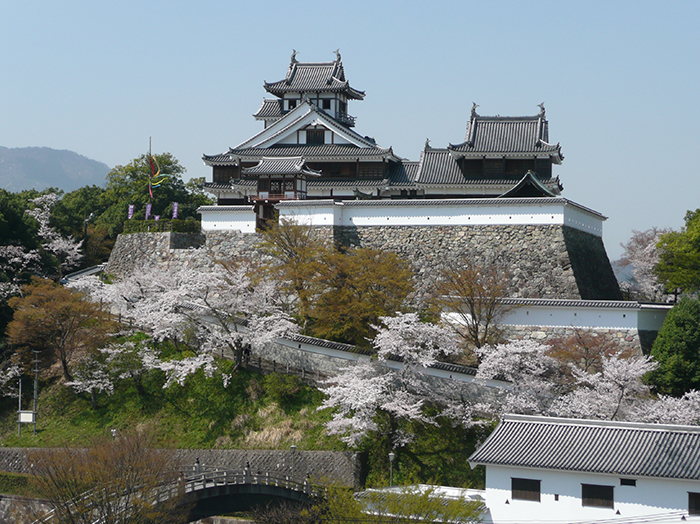
Before Fukuchiyama Castle, there was Yokoyama Castle, a fortress of the Yokoyama, the local ruling family. Akechi Mitsuhide, the samurai who subjugated Tamba, rebuilt the fortress using state-of-the-art castle-building techniques of the time, and renamed it Fukuchiyama Castle. There used to be many structures here, including a three-layered four-storied castle tower and expansive Ninomaru Palace. However, these were taken down one after another, following the abolition of feudal domains in 1871. All that remained was a stone wall between the raised foundation and castle keep, a well called Toyoiwa-no-I, and a guard station. The castle currently standing was reconstructed over a period of three years, and construction was completed 1986. The interior is used as the Fukuchiyama City Folk Museum. The castle park also contains the Fukuchiyama Sato Taisei Memorial Art Museum. Exhibits there are centered on works by the late Sato Taisei, a master of Japanese-style painting.
- Tel
- 0773-23-9564
- Address
- 5 Naiki, Fukuchiyama City, Kyoto Prefecture
- Access
- 15-minute walk from Fukuchiyama Station on the JR Sanin Main Line or on the KTR Miyafuku Line
20 minutes by car
2Oe Station on the Kyoto Tango Railway

Oe Station, named after the oni legends of Oeyama, embraces a mystical theme. Nearby, Oni Tile Park features statues of oni, decorative oni tiles, and vibrant mosaics. The station's shop offers a wide variety of oni-inspired goods, including oni pants, oni-manju (dumplings), oni soba noodles, and unique items such as oni-branded perilla dressing.
13 minutes by car
3Motoise Naiku, Amanoiwato Shrine
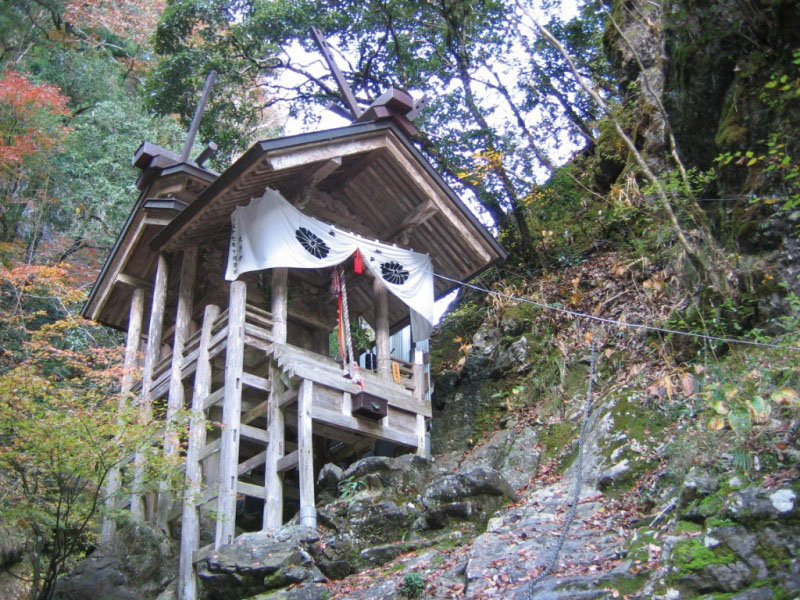
This ancient shrine is one of the locations at which Amaterasu, the Shinto Goddess of the Sun, was enshrined before moving to Ise-jingu Grand Shrine in Mie Prefecture. In fact, this shrine predates Ise-jingu Grand Shrine by fifty-four years. It is also one of only two shrines in Japan to use black cedar torii gates. The shrine is a close walk from the local train station, and another nearby shrine called Amanoiwato Shrine, located in a ravine up the side of a boulder. There are legends that say Amaterasu lived underneath this rock during a period of seclusion.
- Tel
- 0773-56-1011
- Address
- 217 Oemachi Naiku, Fukuchiyama City, Kyoto Prefecture
- Access
- 10 minutes on foot from Oeyamaguchi Naiku Station on Kyoto Tango Railway
8 minutes by car
4Shindoji Bridge and Futasegawa Gorge
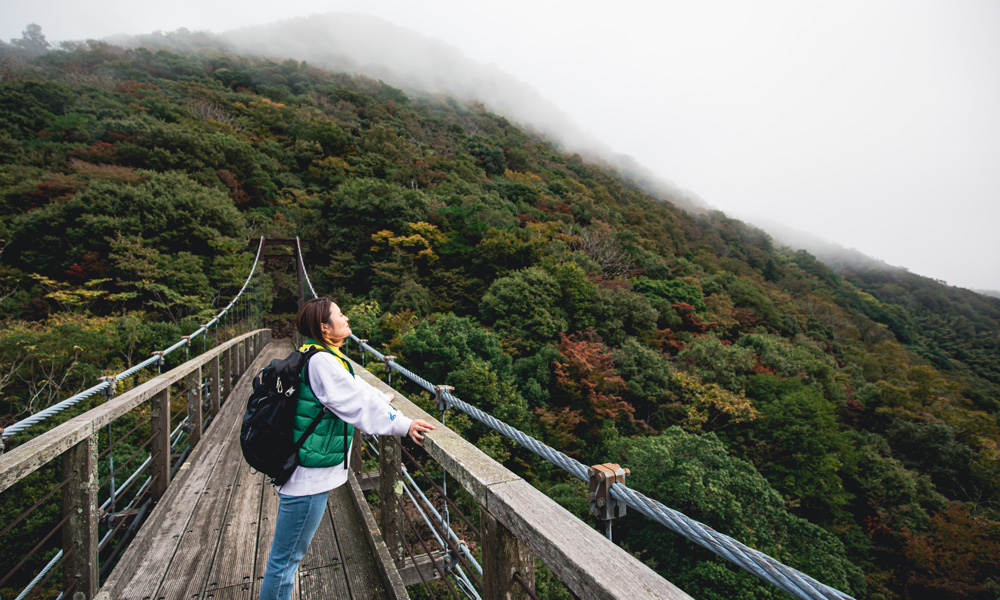
The view from Shindoji Bridge overlooking the stream is breathtaking and has been a popular filming location for movies and suspense dramas. The best time to visit is during the autumn season when the vibrant leaves surround Futasegawa Gorge.
※Please note that Shindoji Bridge is currently closed for inspections due to damage to some of the suspension bridge wires, and the reopening date has yet to be determined.
20 minutes by car
5Mt. Oeyama Mountain Trails
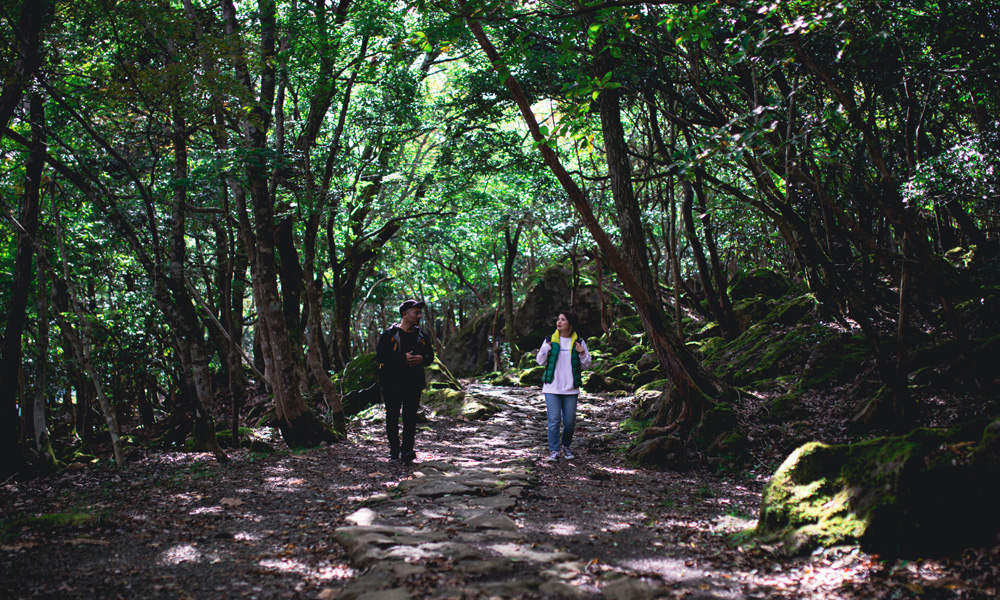
Oeyama is known for its legends of oni, but the mountain paths feel more sacred than fearsome. Many of the trails are easy to navigate, and during the tourist season, you’ll likely meet fellow hikers along the way. For a more immersive experience, consider joining a guided tour. This tour will take you to sites associated with the oni legends and provide you with detailed explanations of their fascinating mythic history.
20 minutes by car
6Japan Oni Cultural Museum
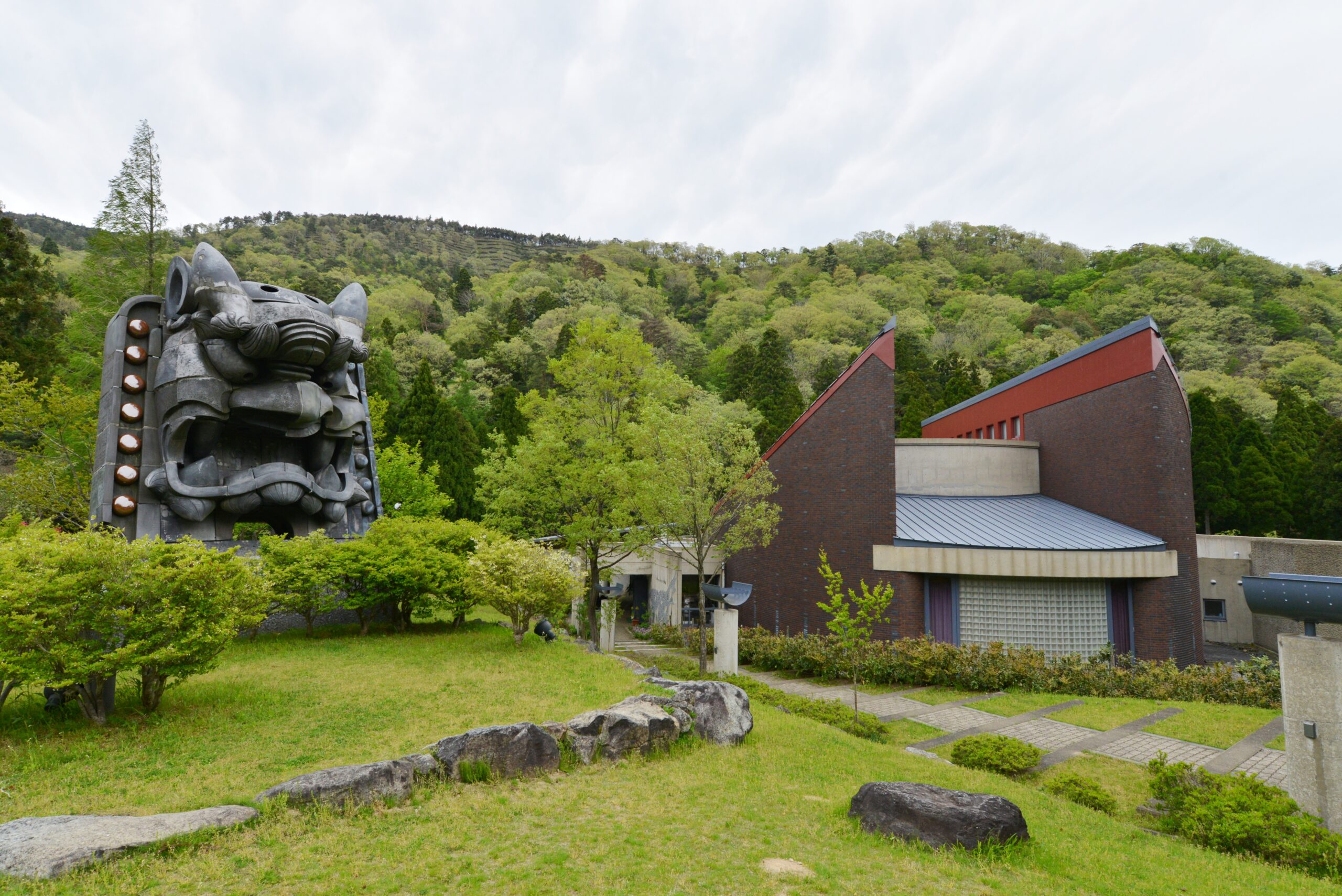
The Japan Oni Cultural Museum is appropriately located at the foot of the Oeyama mountain range, home to the most notorious "oni" (demon or ogre) in Japan, Shuten Doji. The museum explains local folklore and has displays of both national and international oni masks and artifacts. There is a large collection of onigawara, or oni-shaped roof tiles, which were used on buildings throughout history. The surrounding area has parks, places for families to explore on foot, including small waterfalls, rivers, hiking paths, and of course, friendly oni all over the place!
- Tel
- 0773-56-1996
- Address
- 909 Oe-cho Busshoji, Fukuchiyama City, Kyoto Prefecture
- Access
- Train:
(2 hours from Kyoto / Osaka)
Get off at Fukuchiyama Station on the JR San'in Main Line. Transfer to the Kitakinki Tango Railway Miyafuku Line and head to Oe Station.
Car:
Get off at Fukuchiyama IC on the Maizuru Wakasa Expressway or Maizuru Oe IC on the Kyoto Transit Expressway. Take National Route 175 to Oemachi, Fukuchiyama City. Then take Prefectural Route 9 from National Route 175 toward Miyazu.
30 minutes by car
7Kaya Yamanoie
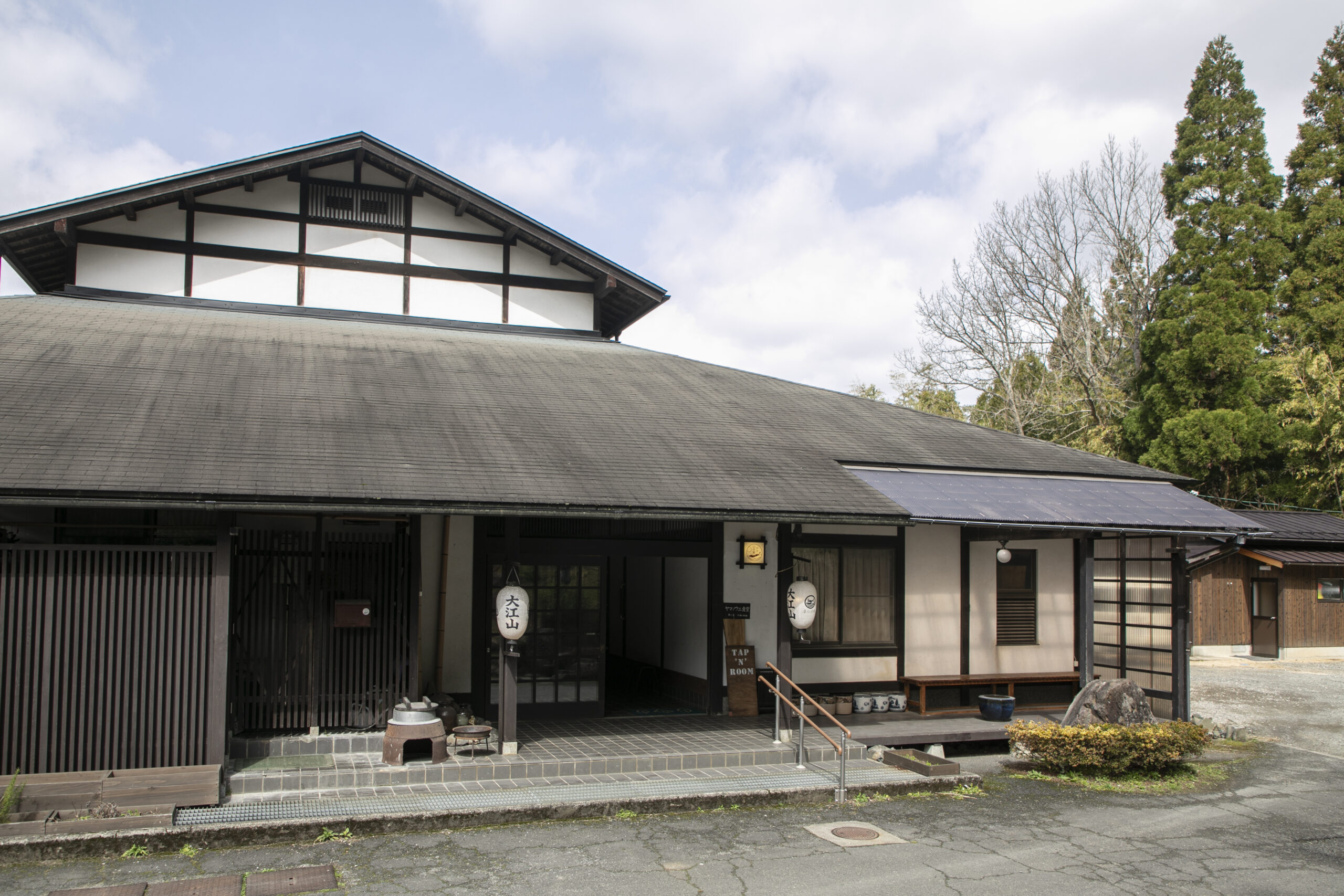
We are located in Tango in northern Kyoto, surrounded by the Oeyama mountain range. Our inn is nestled in the middle of the mountains. It is a pristine rural setting, tucked away from the hustle and bustle of the city. The air is clear and you can sometimes see a sea of clouds in the early morning. Lend your ears to the sound of the wind and the songs of the birds and insects, and experience the nostalgic way of life of Atsue. Using rice from the terraced fields below, seasonal produce, and game meat from our own butcher shop, we serve dishes that are good for both the body and soul.
- Address
- 1401 Atsue, Yosano, Yoza District, Kyoto Prefecture
- Access
- [By car from Kyoto, Osaka, or Kobe]
Maizuru Wakasa Expressway ⇒ Ayabe JCT ⇒ Kyoto Jukan Expressway ⇒ Sanin Kinki Expressway ⇒ "Yosa Amanohashidate IC" ⇒ National Route 312 ⇒ National Route 176
[By train from Kyoto, Osaka, or Kobe]
Kyoto Station or Osaka Station
↓
Fukuchiyama Station (JR Fukuchiyama Line)
↓
Miyazu Station (KTR Miyafuku Line)
↓
Yosano Station (KTR Miyatoyo Line)
We provide transportation from Yosano Station with a reservation.
Day 2
Kaya Yamanoie
25 minutes by car
8Amanohashidate
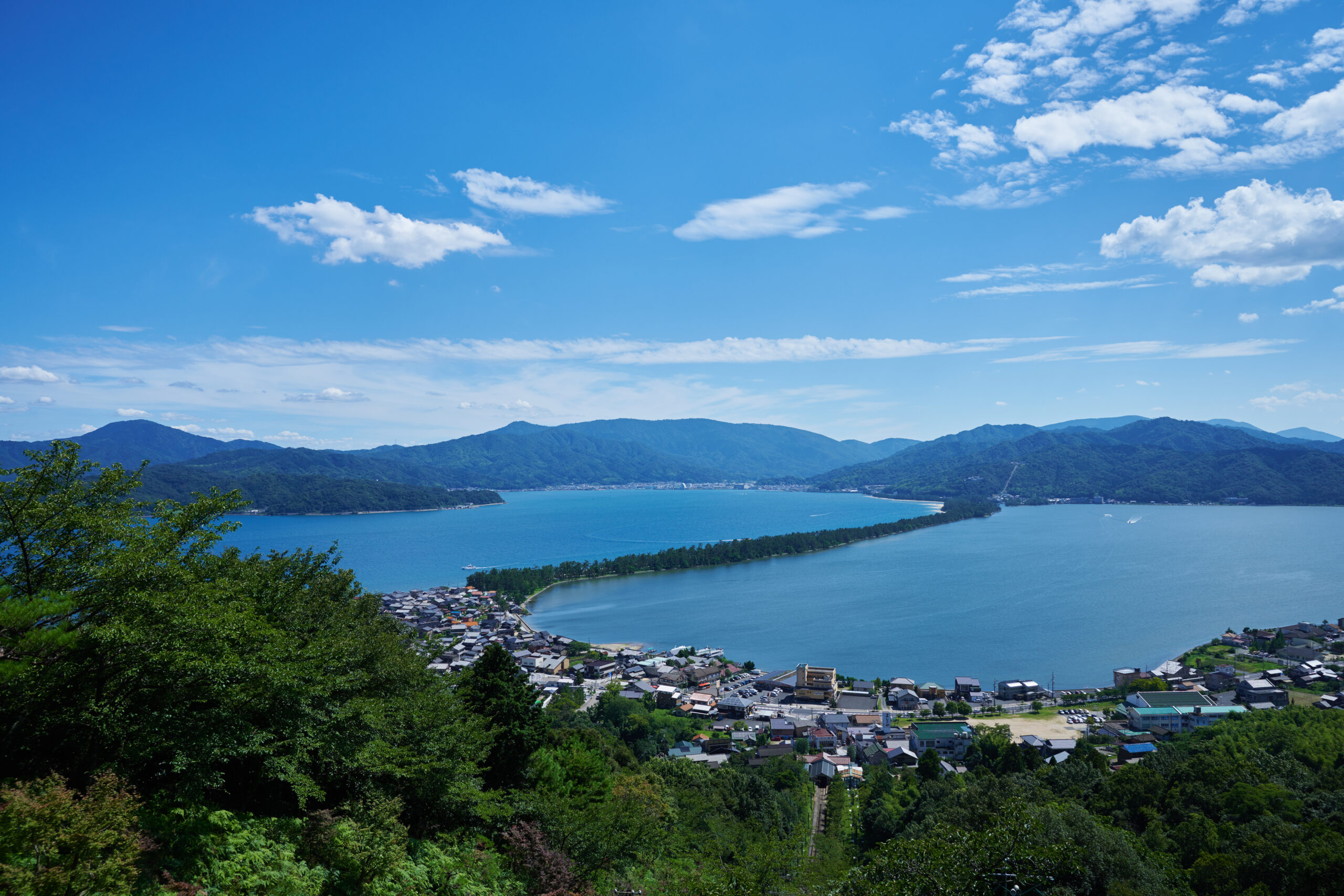
Amanohashidate is one of the “Three Most Famous Views in Japan.” The Amanohashidate sandbar is a natural land bridge described in legend as having been created by the deity Izanagi-no-mikoto as a path from the heavens to visit the deity Izanami-no-mikoto. Amanohashidate is a natural work of art created by the Sea of Japan and the Noda River, flowing from its source on Mt. Oe. The mysterious beauty, the white sands and green pine trees present a truly superb view. Some 8,000 pine trees grow in the sand along the roughly 3.6-kilometer bridge. The shrine Hashidate Myojin (Amanohashidate-jinja Shrine), a famous freshwater well called Isoshimizu, and a road bridge that swings 90 degrees to allow ferries and barges to pass are among its additional points of interest. Visitors can walk or cycle from one end of Amanohashidate to the other. There are benches and rest areas along the way. Amanohashidate is included in many “Best 100” lists: 100 Famous Pine Trees of Japan, 100 White Sand and Green Pine Sites of Japan, 100 Roads of Japan, 100 Beaches of Japan, 100 Famous Waters, 100 Historic Parks of Japan, 100 Beautiful Historic Landscapes of Japan, and 100 Geological Features of Japan.
- Tel
- Amanohashidate Tourism Information Center: 0772-22-8030
- Address
- Tango-Amanohashidate-Oeyama Quasi-National Park Monju, Miyazu City, Kyoto Prefecture
- Access
- Train: 5 minute walk from Amanohashidate Station on the KTR Miyatoyo Line
Car: 10 minute drive from Kyoto Jukan Expressway (Ayabe-Miyazu section) to Miyazu-Amanohashidate Interchange
25 minutes by car
9Nariai-ji Temple
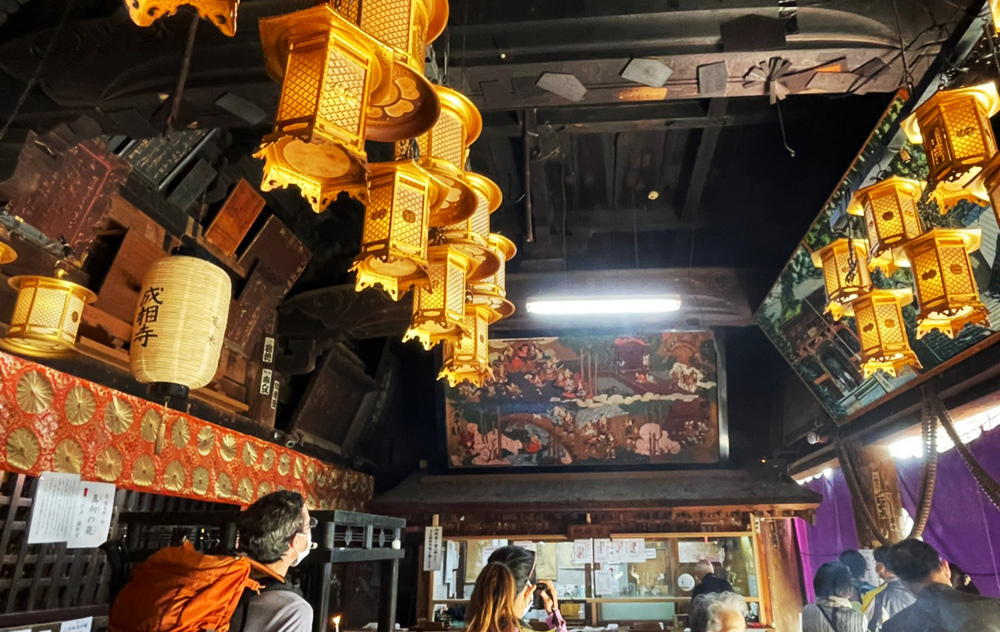
Nariai-ji Temple is the 28th stop on the Saigoku Pilgrimage and is located in the beautiful Amanohashidate area. The temple is famous for the legend of the Substitute Kannon, where people believe their wishes can come true. Another interesting feature of the temple is a large painting on the right side of the main hall. This painting shows the Shuten-dōji and Minamoto no Yorimitsu dressed as a Yamabushi.
30 minutes by car
10Ine Boathouses (Funaya)
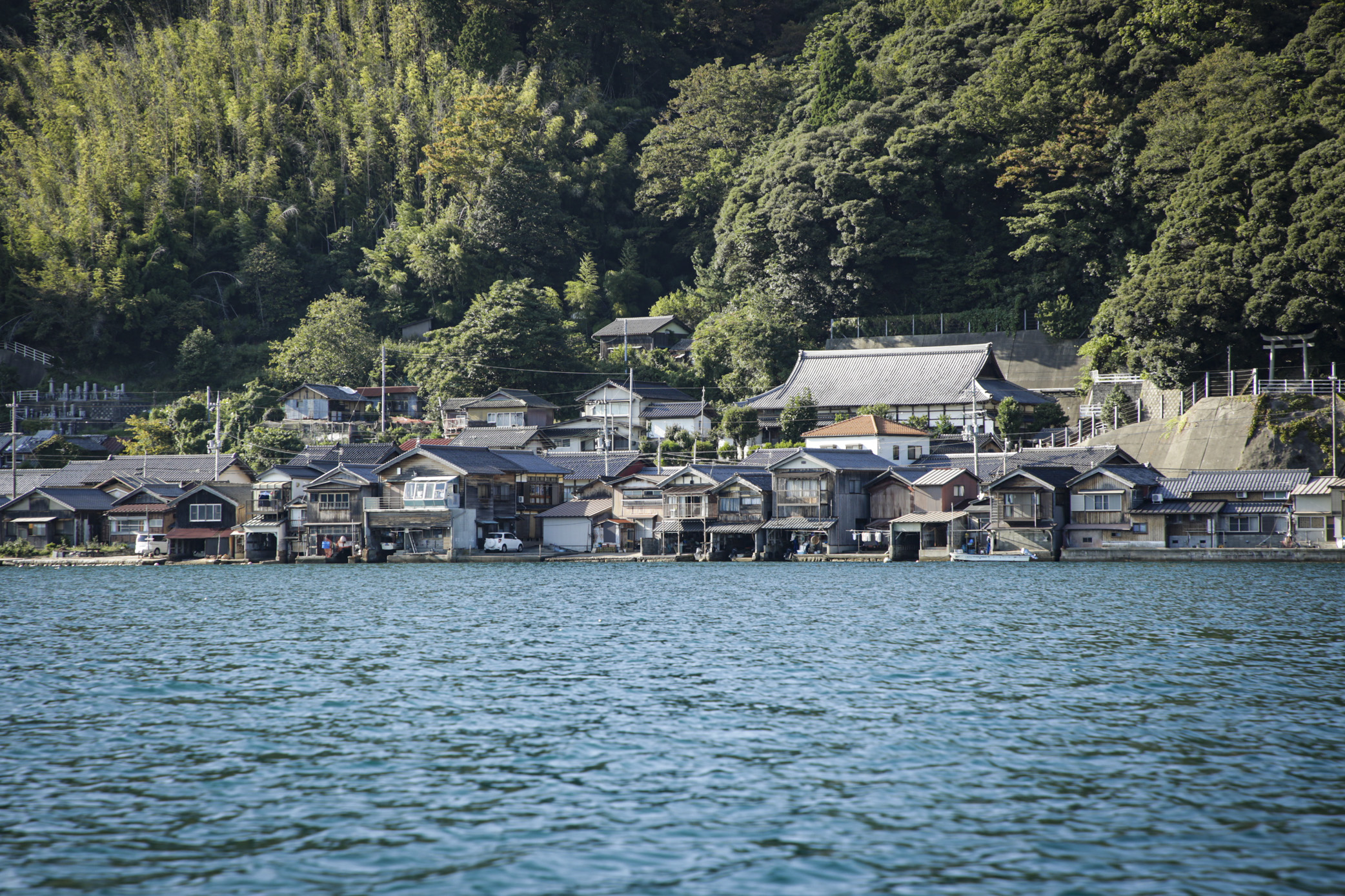
Ine is a quaint seaside village in the "Kyoto by the Sea" area, situated in northern Kyoto Prefecture. This charming village hugs the coastline of the Sea of Japan and is famous for its unique wooden boathouses, known as "funaya." These boathouses are a hallmark of Ine, celebrated for their distinct architecture and historical importance. This design blends practicality with beauty, showcasing the seamless integration of human life with nature. The boathouses of Ine are a designated Group of Historic Buildings, a category under Japan's Historic Preservation Act, further highlighting their cultural importance. The funaya of Ine date back to the Edo period (1603 to 1868). Each boathouse has two levels: the lower floor is used to store fishing boats and gear, with the floor almost flush with the waterline, giving the impression that the houses are floating. This tranquil setting has made Ine a popular backdrop for television shows and films, capturing the essence of traditional Japanese coastal life. Many of the boathouses have been transformed into cozy cafes, restaurants, and inns. For a deeper experience, visitors can even spend the night in one of these charming converted inns. To get a different view, you can take a guided tour, such as the Ine Bay Cruise or a ride on a water taxi, allowing you to see the boathouses from the water. While exploring, it's also worth taking a cycling tour to learn about Ine’s rich past, or heading up to the roadside station perched above the village for a stunning aerial view of the boathouses. Remember, many funaya are still private homes, so it's important to be respectful of the locals as you wander through the village.
- Address
- Ine-cho, Yosa District, Kyoto Prefecture
- Access
- Bus: From Amanohashidate Station on the Kyoto Tango Miyatoya Railway Line, take Tankai Bus to Ine, approximately 60 minutes.
Car:
Head North by car for 45 minutes from Miyazu via National Route 178. Approx. 45 minutes from Kyoto-Jukan Expressway, take the Yosa Amanohashidate IC from Miyazu Yosa Road, and then go to National Route 176-178
11Stay in Ine Town
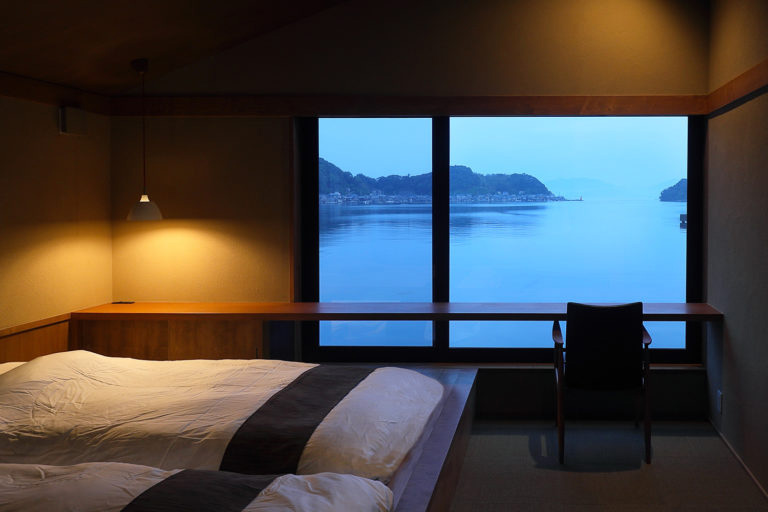
Experience the closest connection to the sea in Ine Town, famous for its iconic boat houses. You can choose from a variety of accommodations, including popular boat house stays, ryokan, and minshuku, to match your preferred style.
Day 3
Ine Boathouses
20 minutes by car
12Kamaya Coast
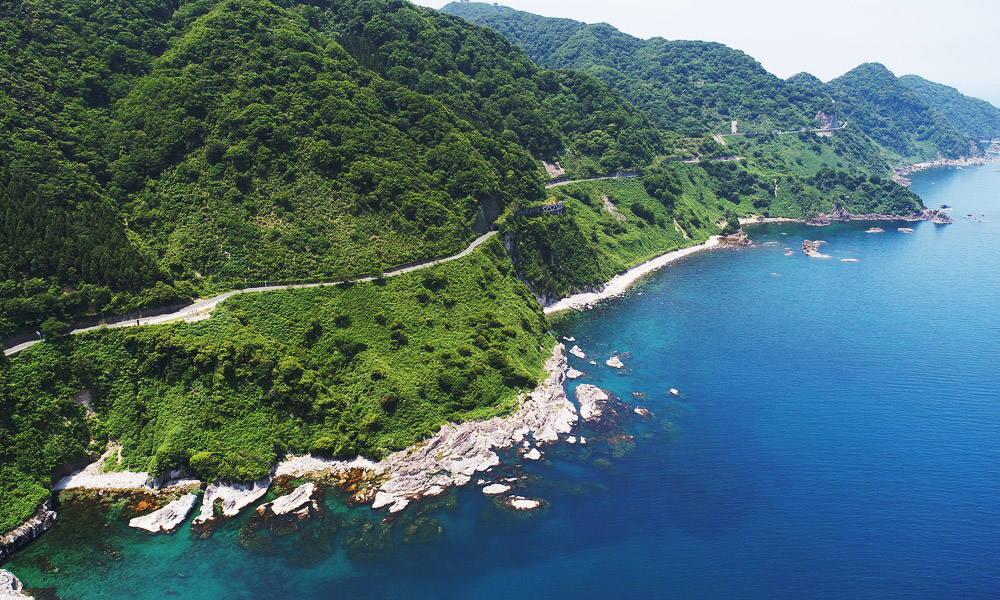
As you drive along the coastal road, winding through towering cliffs and rugged rock faces, you'll be treated to breathtaking views of the deep blue sea below. The coastline, where lush green mountains meet jagged rocks, showcases the stunning beauty of nature's artistry.
30 minutes by car
13Discover the Art of Swordmaking: "Visit a Traditional Forge"
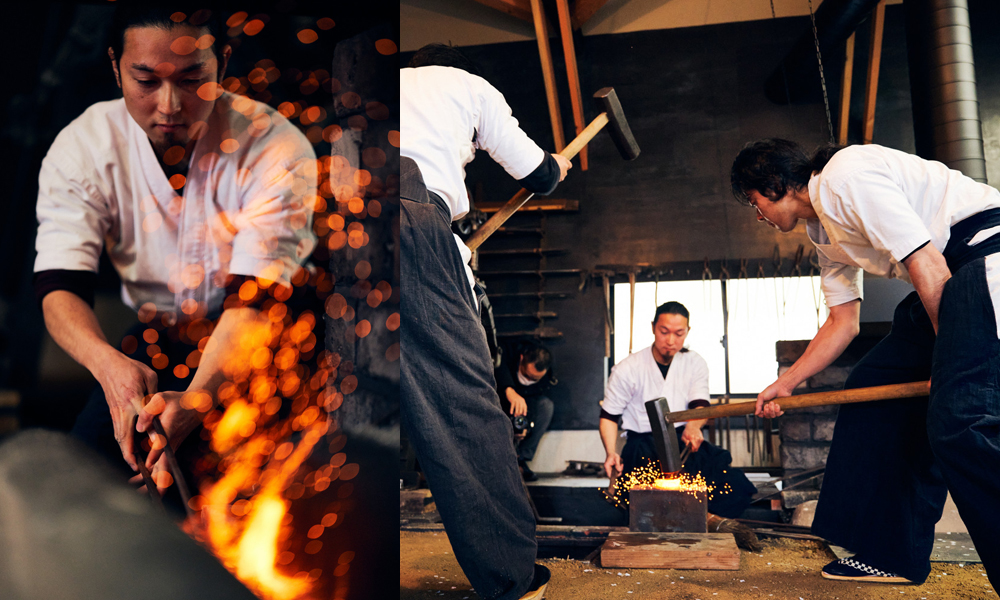
Visit a sword forge inspired by the anime Demon Slayer for a unique experience. This hands-on tour introduces you to Japanese sword-making and its craftsmanship. You will see the traditional process of making a sword without machines. Feel the sounds, heat, and power involved in this exciting process.
10 minutes by car
14Tateiwa (Standing) Rock
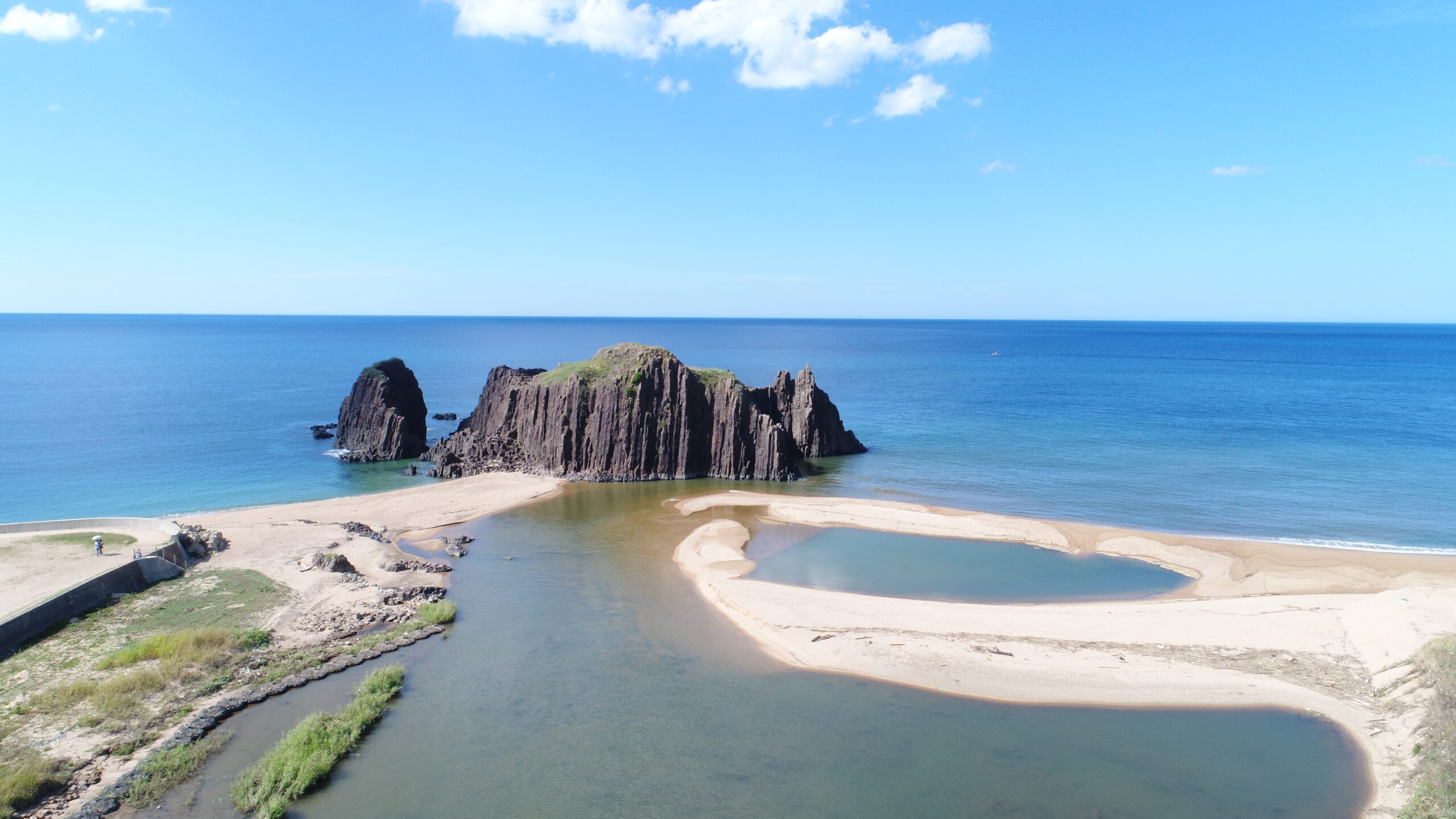
Tateiwa (pronounced Tateh-Ihwa) Rock is a part of Japan's San'in Coast Geopark. It is located on Nochigahama Beach in Kyotango City, Kyoto Prefecture. Standing at 20 meters tall, it is one of Japan's largest monoliths and is made from a type of volcanic rock called andesite. According to legend, when Prince Maroko (the half-brother of the legendary Prince Shotoku) killed an oni (a demon in Japanese folklore) on this spot, the oni became trapped in the enormous rock overnight. It's said that even now, on nights when the winds are strong and waves are high, you can still hear the cries of the oni trapped within. Tateiwa got its name from the way it stands tall (tate = stand/vertical, iwa = rock), and creates beautiful scenery with the way it stands out of the Sea of Japan.
- Address
- Tango-cho Taiza, Kyotango City, Kyoto Prefecture
- Access
- Bus: From Mineyama Station on the Kyoto Tango Railway's Miyatoyo Line, take the Tango Mineyama Line bus (bound for Taiza) for 30 mins, get off at the stop in front of the Tango Government building (called "Tango-chosha-mae"), and walk for 5 minutes
Car: From Sanin Kinki Expressway Nodagawa Omiya Road, get off at Kyotango Omiya Interchange, head straight and turn right onto National Highway 312, turn right onto National Highway 482, continue on to Taiza, and follow the signs for Tateiwa.
